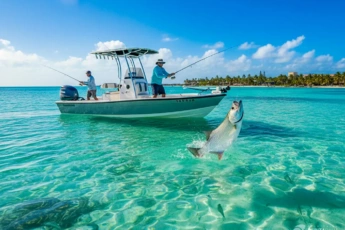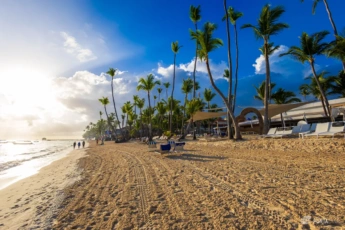Are there any dangerous animals in the Dominican Republic in 2025?
You have decided to get away from the daily routine, gather your thoughts, swim in the ocean, soak up the sunshine, and choose the Dominican Republic for a vacation. It is a country with a tropical climate. Thereby you can ask very logical questions: are there dangerous or irritating animals, and how harmful can they be?
Primarily, the chances of seeing a dangerous wild animal in tourist areas are reduced to zero. Nevertheless, it would be best if you kept in mind that there is a difference between resort areas and local native villages and the forests where wildlife is preserved better.
Below are the most useful and interesting facts about wild and dangerous animals of the Dominican Republic and tips on how to act if bitten.
Are there sharks in the Dominican Republic?
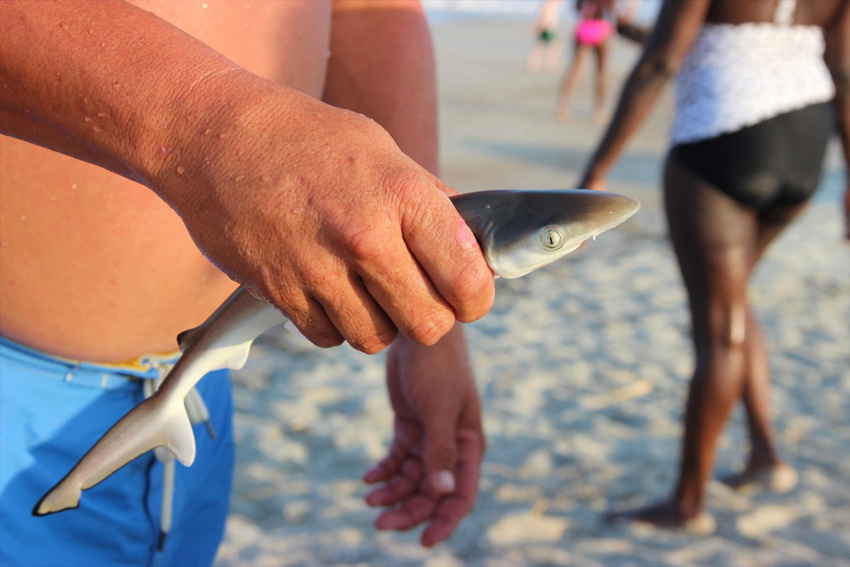
The likelihood of encountering sharks in the Dominican Republic is low.
There are no aggressive or dangerous sharks nearby the coastline or the Dominican Republic. Of course, sharks do exist in the Caribbean, but they occur more than 500 meters from the coastline and get closer seldom.
The Dominican Republic provides the safety of tourists quite well. Just follow the standard rules of behavior while swimming in the open waters. Watch your steps, and you will be out of danger.
Has there been a shark attack in the Dominican Republic?
Sharks are considered deadly killers; nevertheless, the reality is much different. The shark is a predator that eats mainly large prey: seals, sometimes dolphins, and all sorts of large fish. Only dolphins appear in all nominees near the Dominican Republic coastline, but rarely. Human beings are not on sharks’ usual diet.
Interesting facts: sharks have no bones, can go into a trance, and their skin feels like sandpaper.
Still, very little chance of getting into an accident with sharks exists. Throughout the past 50 years, in the Dominican Republic, 3 sharks attack have been reported. All of them happened in the open sea. The coral reef naturally protects the beaches of the Dominican Republic.
Tiger sharks in the Dominican Republic
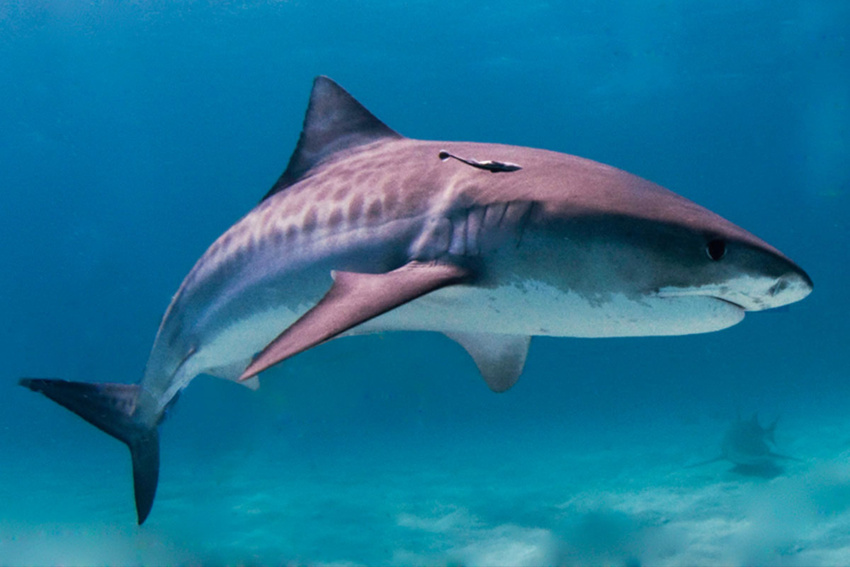
Tiger sharks can reach a length of 25 feet (7.5 meters).
The Tiger shark is extremely rare in the waters of the Dominican Republic. This species is the fourth-largest shark in the world. The heaviest one ever found by people weighed over 1700 pounds. A group of fishermen caught a giant Tiger shark in the south of the Dominican Republic in 2013. It took them 8 hours to defeat this 14-foot marine creature. By the way, humans are the only natural predator of Tiger sharks.
Can you swim with sharks in Punta Cana?
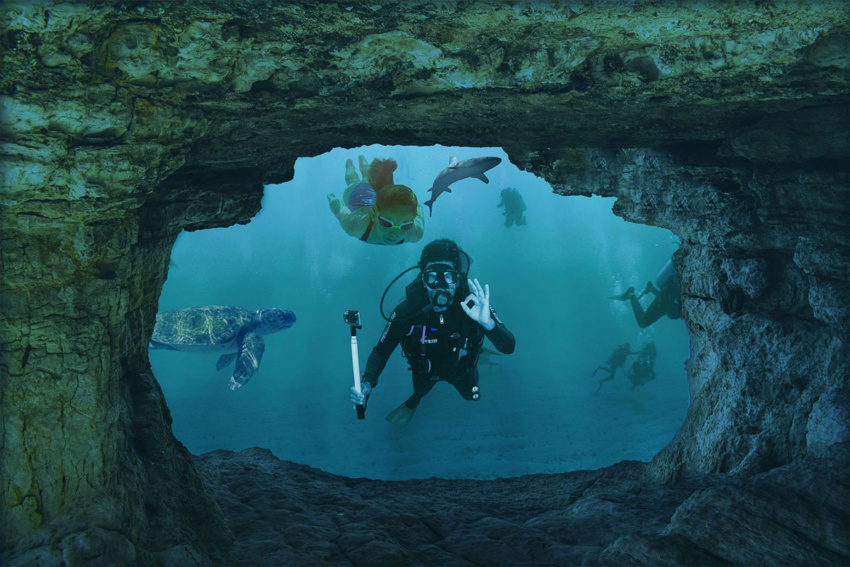
You can dive with sharks in Punta Cana.
Not everyone is afraid of sharks. Some people even look for an opportunity to interact with them. Such an opportunity exists in Punta Cana. You can enjoy a shark excursion or an adrenaline rush during shark diving. Comfortable transportation, a Sea Lions show, and swimming with rays are included.
-
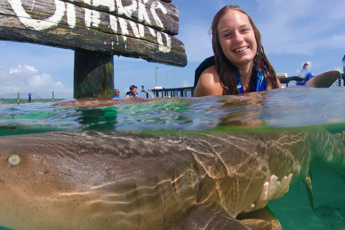
Swim with Sharks and Rays in Punta Cana
from $45 View Details -
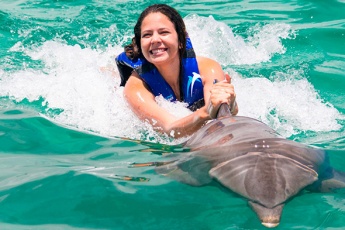
Extreme Swimming with Dolphins in Punta Cana! + Sea Lions, Fur Seals, Sharks and Rays
from $259 View Details -
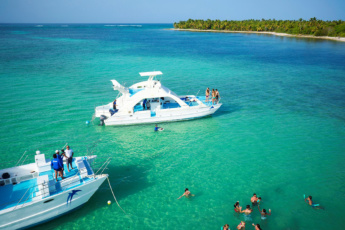
Swim with Dolphins in Punta Cana! Dolphin Explorer Cruiser
from $104 View Details -
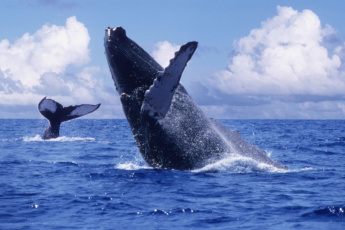
The Best Samaná Whale Watching Tour 2025 – Humpback Whales, Cayo Levantado, El Limon Waterfall
from $149 View Details
Are there sea urchins in the Dominican Republic?
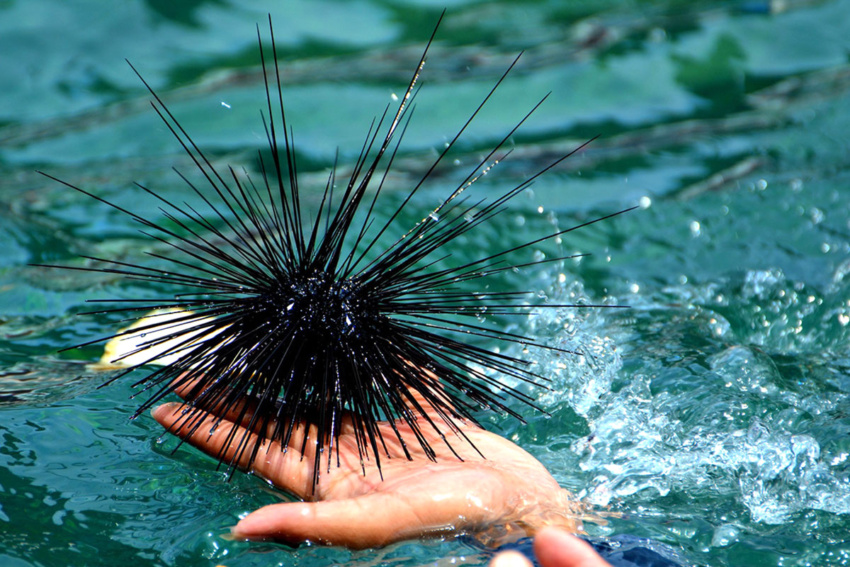
You can randomly come across sea urchins in the DR.
The Dominican Republic’s warm waters provide a particularly pleasant habitat for sea urchins. You can randomly come across them while snorkeling or diving around the coral reefs or on virgin beaches. The sea urchin’s body is covered with a forest of needles. It looks lovely, but this is an effective weapon for self-defense. Stepping on a sea urchin can be painful and have negative consequences.
How do you protect yourself from sea urchins?
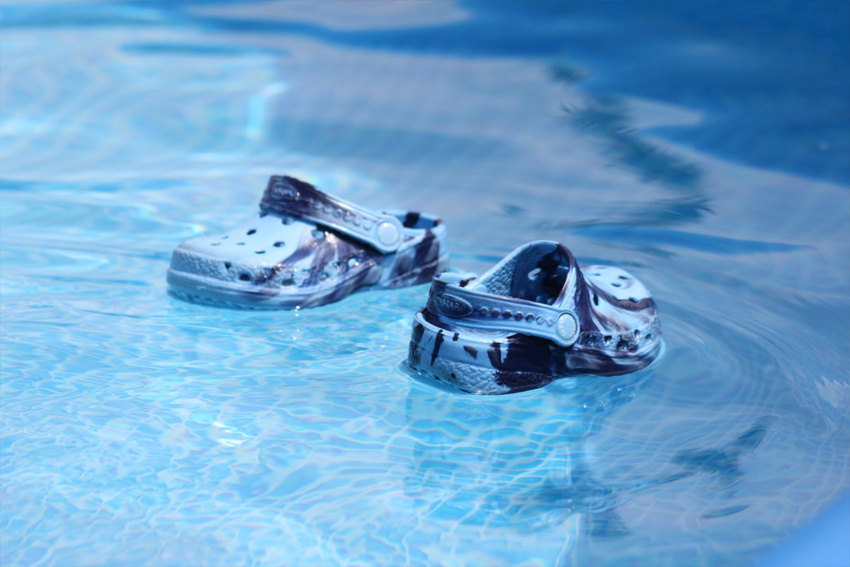
Water shoes provide protection to your feet.
The best way to protect yourself from stepping on a sea urchin is to use water shoes during swimming or snorkeling nearby the coral reefs. Water shoes are made of flexible mesh materials and have thick soles. Easy to put on, shoes provide your feet protection from sea urchins, corals, and sharp stones.
You should also watch where you put your feet and avoid touching sea urchins with pressure.
How to treat a sea urchin sting?
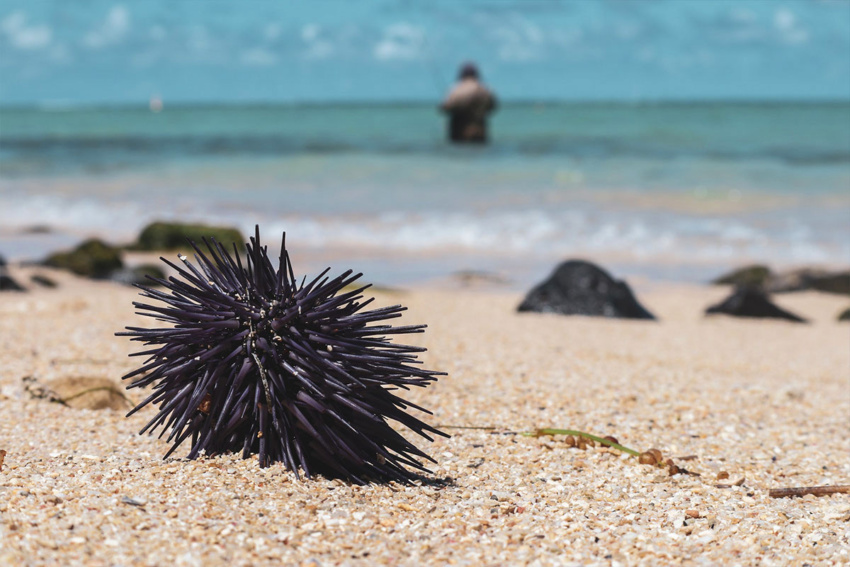
Pain from a sea urchin sting may last several hours.
If you accidentally stepped on a sea urchin, you would recognize it immediately. An extremely painful sting leaves puncture wounds on the skin. Get out of the water immediately. Some people can lose orientation because of a strong injection. Immediately remove the sea urchin spine and pedicellariae.
Do not hesitate to contact the doctor, especially when the needles are too deep or stuck in the joint area.
First Aid for embedded sea urchin spines
If you don’t have the opportunity to see a doctor and if the urchin’s needles are visible, not thick, and haven’t entered deeply into the tissue, you can follow the next steps at your own risk:
- Pour the injured area with any alcohol-containing liquid for disinfection (perfumes, alcohol, or an antiseptic gel will also work).
- Remove thick parts with tweezers using careful smooth movement. Try not to break the needle. Remove it at the same angle at which it was inserted.
- Rinse the wound thoroughly with water and soap and disinfect it once again.
- If you still feel needles under the skin and cannot remove them – apply vinegar (5-7%) or lime juice compresses the affected area for 15-30 minutes. The acid will help dissolve the needles. It will accelerate the dissolution process and reduce the pain. If you see dark spots or spines protruding from the skin, you should continue applying compresses several times a day.
- If the pain doesn’t go away, there is pus in the wound, or an allergic reaction, contact a doctor.
The residents are using unusual ways to treat sea urchin stings. They crush the needle with a small clean, and disinfected stone or a glass bottle. You have to beat it pretty hard. The procedure is not pleasant and painful. The idea behind that procedure is that needles are made of organosilicon compounds and easily dissolve in the body. To make that process faster, you have to make the needles smaller. Please do not try it at home. Go to the doctor, and he will remove the spine and pedicellariae gently and safely and treat the wound.
Can you eat a Caribbean Sea urchin?
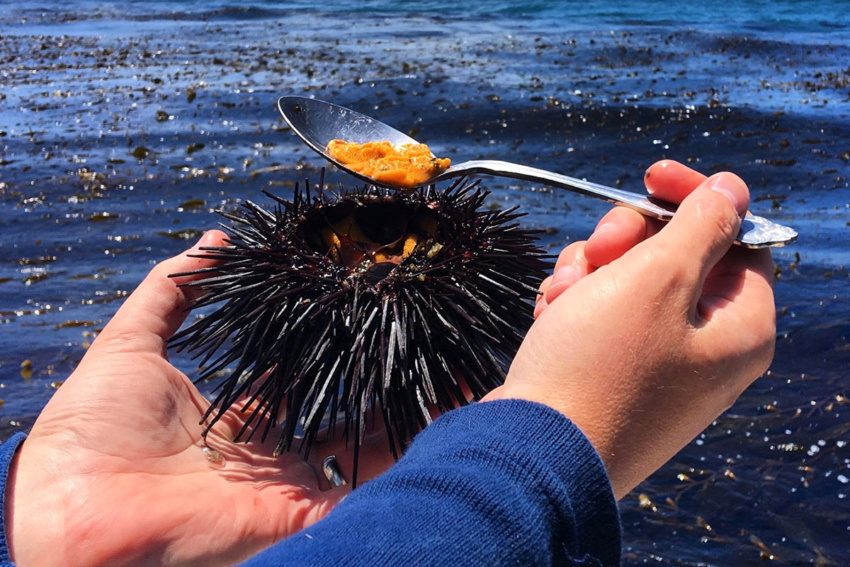
The delicacy has a strong smell of the ocean, a creamy texture, and a musky taste.
Caribbean urchins are edible. Sea urchins are considered a delicacy all over the world and even an aphrodisiac in Japan. The edible part is the gonads. They have a creamy taste and are served in many forms: raw, rice, pasta, and even spread on a loaf of crusty bread.
What to do if you find a sea urchin on the beach?
If you find a sea urchin on the beach, try to get rid of it, but touch it lightly, without any pressure. Use something to avoid direct contact with your hands. Sea urchins are not aggressive, but their needles can puncture the skin if you touch an urchin with pressure. Its venom is not life-threatening but can be very painful and can trigger infection.
Are there scorpions in the Dominican Republic?
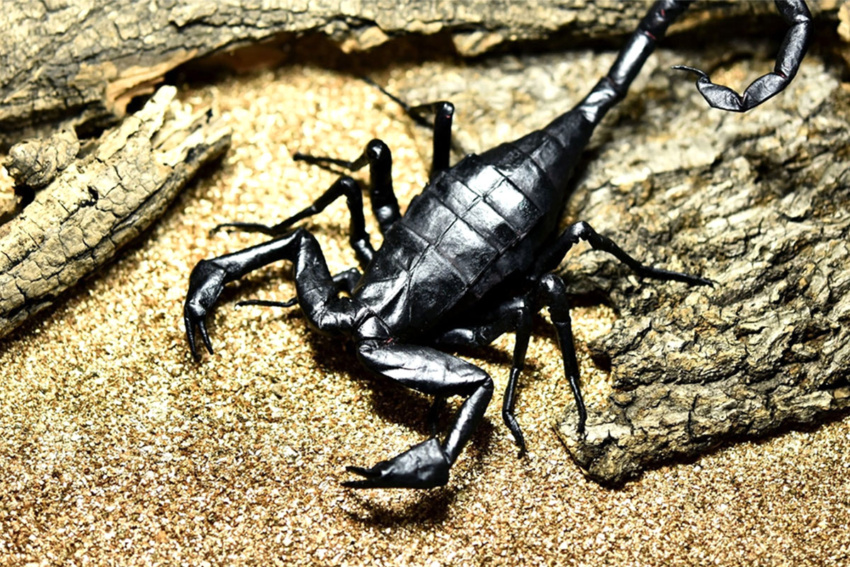
Scorpions in the DR are not dangerous to humans.
Yes, the list of known scorpions that inhabit The Dominican Republic and Haiti consists of forty-five species. Scorpions are older than dinosaurs. They are on the list of the most ancient animals that still live on Earth. 420 million years ago, they ventured from the ocean onto dry land. Just imagine, they are 2100 times older than people. Scorpions are less dangerous than they look, and they dance before mating.
1,500 scorpions are known to scientists, just 25 are thought to be lethal to people, and none lives in the Dominican Republic.
A Dominican scorpion’s sting is painful but rarely lethal and does not require treatment in most cases. However, it is always better to ask for assistance at the nearest health care center due to the danger of an allergic reaction or infection.
Are spiders in the Dominican Republic poisonous?
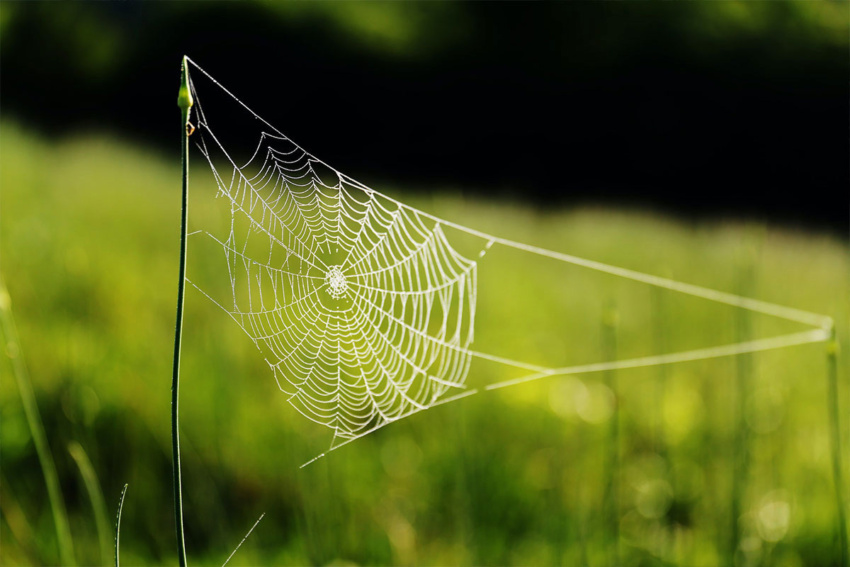
Almost all resorts are regularly fumigated from all insects
Most people in the world have an irrational fear of spiders and spider webs. Nobody knows where it comes from. According to one of the most popular theories, the reason is the human environment. In particular, the development of that fear is much more likely within the Western world than, for example, in Cambodia, where roasted tarantulas and scorpions are considered a delicacy.
In the DR, like everywhere in the world, there are many different species of spiders. However, it is a tourism-oriented country, and all tourist and hotel areas are regularly fumigated from all insects and bugs, including spiders.
The situation in other areas of the country is a bit different, and a few dangerous spiders do live there. Let’s find out which species are worth being afraid of and which are not harmful.
Dominican Banana Spider
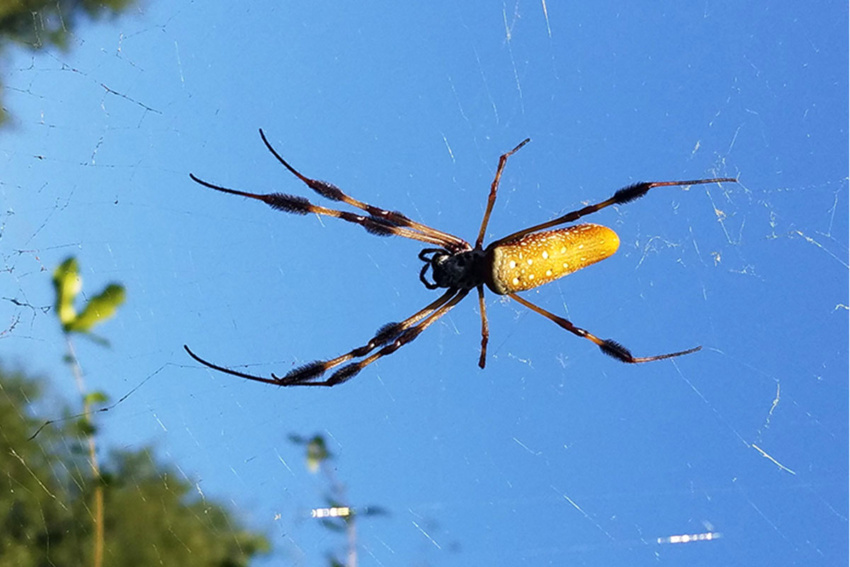
The Banana spider has a bad character, it can jump on you
Banana spider gets this name because people often discover it on banana leaves and in banana boxes. It is also named Huntsman Spider and Golden Silk Spider. Generally, it is aggressive and has a painful bite but only attacks if held or pinched.
Unlike the Brazilian banana spider, the Dominican species is not considered dangerous. The pain from the bite quickly goes away. Its venom is not lethal or harmful to humans.
Black and brown widow
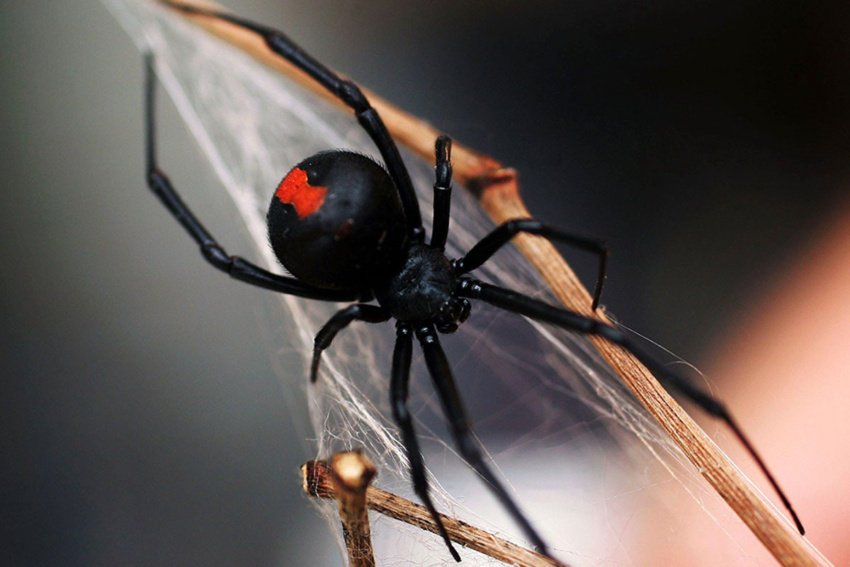
The black widow spider is one of the most dangerous spiders in the world.
The Black widow spider is only 9.8 inches long and is still considered one of the most venomous spiders known to humans. It has shiny black coloring with red dots on the top and the abdomen. Even though female spiders kill and eat males after mating, this spider is spread worldwide.
Whether you are in the Dominican Republic or Western Europe you should avoid it at all times. Very aggressive when protecting its eggs, the Black widow spider chases those they view as threats.
The Brown widow spider is not aggressive and has a reputation as the most non-venomous representative of widows. It has a mark on its abdomen resembling bright orange or yellow hourglass. Brown widow is often found in secluded places created by humans, such as garages, wastelands, storerooms, or under cars. Its venom is not lethal to humans.
Are there tarantulas in the Dominican Republic?
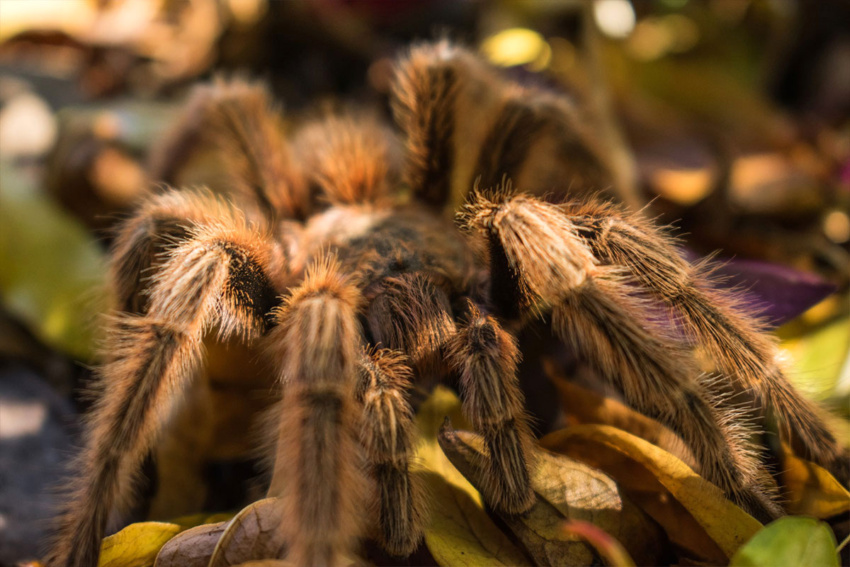
Hispaniolan Giant Tarantula
The Dominican Republic is home to a tarantula-like spider the Hispaniolan giant tarantula (Phormictopus cancerides), known as the Cacata spider. The bite of this species is unpleasant, but it bites extremely rarely. It is even used in the treatment of arachnophobia.
The Cacata spider is the largest representative of eight-legged crawlers in this region. Although it is a native spider, the Hispaniolan Giant tarantula is so rare in the Dominican Republic that residents consider meeting him a sign of imminent death.
What to do if you get bitten by a spider?
- Do not panic, and do not make quick movements when you see an unknown spider nearby. Remember that it attacks only for protection. For example, if you try to catch it or wave your hands in front of it. If a bite happens, you should seek medical attention.
- Before being checked by the doctor, you can help yourself by washing the bite with soap and water. You can also apply an antibiotic ointment to prevent infection.
- Apply cold wet tissue or ice to the wound and change it every 10 minutes. If a spider bites you in a hand or a leg, lift the limb in order to avoid swelling.
Are there mosquitoes in the Dominican Republic?
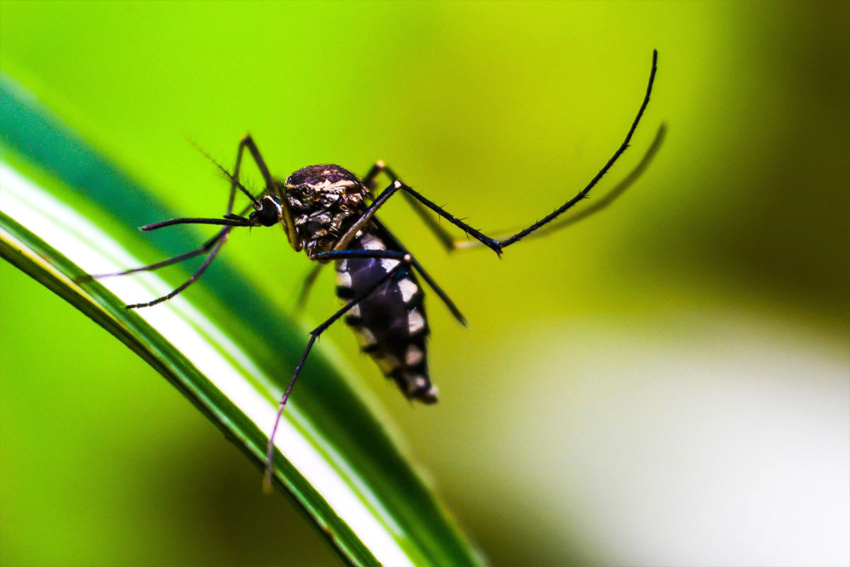
Aedes aegypti. It bites even during the day.
Mosquitoes occupied all regions on the planet Earth except Antarctica. Those insects are considered the most dangerous creatures on the planet. Aside from being annoying, they can cause allergic reactions and spread viruses and parasites to people and animals. In the Dominican Republic, dangerous species can be recognized by white bands on the legs and white spots on the abdomen.
The presence of mosquitoes always makes getting outside unpleasant, especially when spending time with family and friends. Thus, it’s a good idea to have insect repellent in your travel bag.
Are mosquitoes a problem in Punta Cana?
Most Dominican resorts are regularly fumigated from mosquitoes and other bugs. However, this treatment does not give 100% protection against mosquitoes. Renting a villa or private apartment, where mosquito nets protect all windows, might be wise. You should always ask the host about what ways they use to protect the property from mosquitoes.
Besides you can use very convenient and inexpensive services such as renting a chef for cooking, so you can feel as comfortable as in an all-inclusive hotel and not irritated by flies and mosquitoes.
-

Bávaro White Sand 2BR Townhouse – Long Term Rental in Punta Cana
from $1700 / month View Details -

Condo for Rent in Punta Cana – Stunning Ocean View – Oreuga
from $1215 / night View Details -

Beachfront Punta Cana Condo for Rent – Private Apartment with Stunning Oceanview, Bávaro, Los Corales
from $449 / night View Details -

Dream Apartments for Rent in Punta Cana – Oreuga Ocean View Paradise
from $649 / night View Details -

Event Venue for Rent in Bavaro Beach, Punta Cana
from $2000 / night View Details -

Quiet and Cozy Family Apartments for Rent – Directly on the Bavaro Beach, Punta Cana
from $549 / night View Details
How can I avoid mosquitoes in the Dominican Republic?
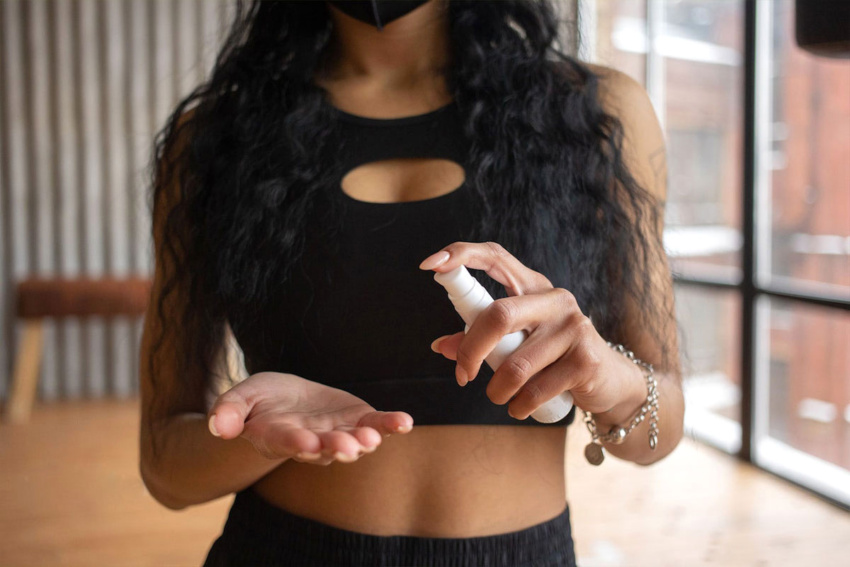
You may use both natural and synthetic repellents.
There are a few ways to protect effectively from mosquitoes
- You can buy bug-repellent spray or cream or make the repellent on your own.
- You can hide your skin with loose sleeves clothes while out for an evening walk.
- You should close the doors and windows when you leave your room.
- You can also use mosquito coils to light if sitting outside.
- There are many repellent products, even anti-mosquito socks, sound-emitting devices, and bracelets.
When you buy anti-mosquito repellent, please pay attention to how many percent of component DEET (N, N-Diethyl-meta-toluamide) or picaridin it contains. The most effective means of protection are those containing more than 20%, for example, Sawyer Products 20% Picaridin Insect Repellent, Cutter Backwoods Dry Insect Repellent, Ranger Ready Picaridin 20% Tick + Insect Repellent, Ben’s 30% DEET Wipes.
There are also a few facts you should know about mosquitoes
that can help you avoid their bites
- Mosquitoes like the aroma of perfumes, lotions, and scented deodorants, so try to avoid using them.
- The smell of sweat attracts mosquitoes, so use antiperspirants, but not very aromatic.
- Close the doors and windows when you leave the room.
Mosquito season in the Dominican Republic

Mosquitoes are more active during the rainy season.
As the wet season in the Dominican Republic begins, mosquito season reaches its peak and it lasts from May till October. It does not mean that it rains without a break and crowds of mosquitoes are following human beings to suck their blood off. It just rains more often, and you should have some nice repellent in your pocket because insects can disturb you.
What should I do if I get bitten by a mosquito?
People react differently to mosquito bites. Some have almost nothing left after a bite, and others may have big red traces. If you have an allergy reaction, you must go to the hospital. In other cases, a nice bug bite relief product would be enough to stop you from itching. You can use an antihistamine, for example, Benadryl (cream, gel, spray), or 1 percent hydrocortisone cream to treat the affected area (consult your doctor before using these products).
Alligators in the Dominican Republic
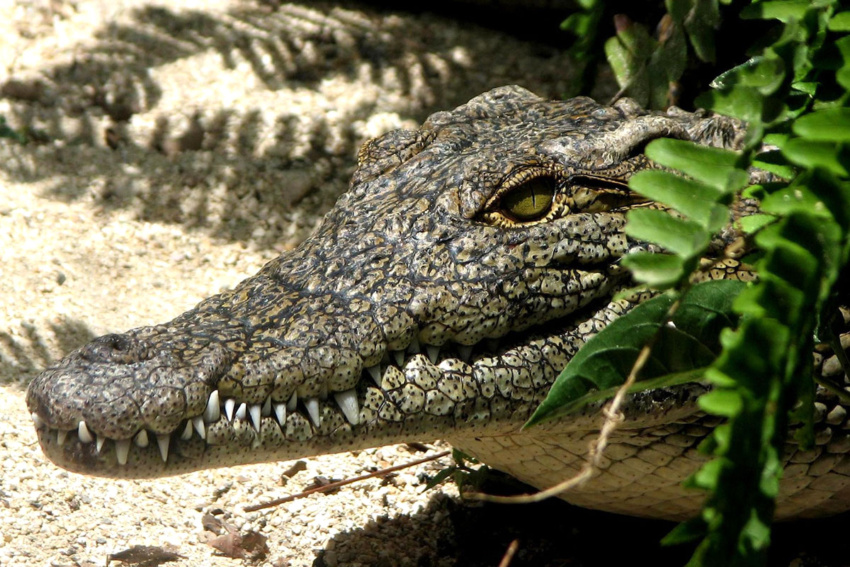
In the DR, alligators live only on the territory of Lake Enriquillo.
Nowadays the alligators do not exist in the wild nature of the Dominican Republic, but they lived here in the past. Now they live in a special nursery for them. The crocodiles were given an island in the middle of Lake Enriquillo, in the hottest corner of the country.
Lake Enriquillo is a huge (about 250 sq. km), insoluble, highly salt lake in the west of the Dominican Republic. One of the few lakes in the world where crocodiles live in salt water. The Dominican Republic gave shelter for crocodiles as an act to save the endangered species, the American crocodile.
Are there any venomous snakes in
the Dominican Republic?
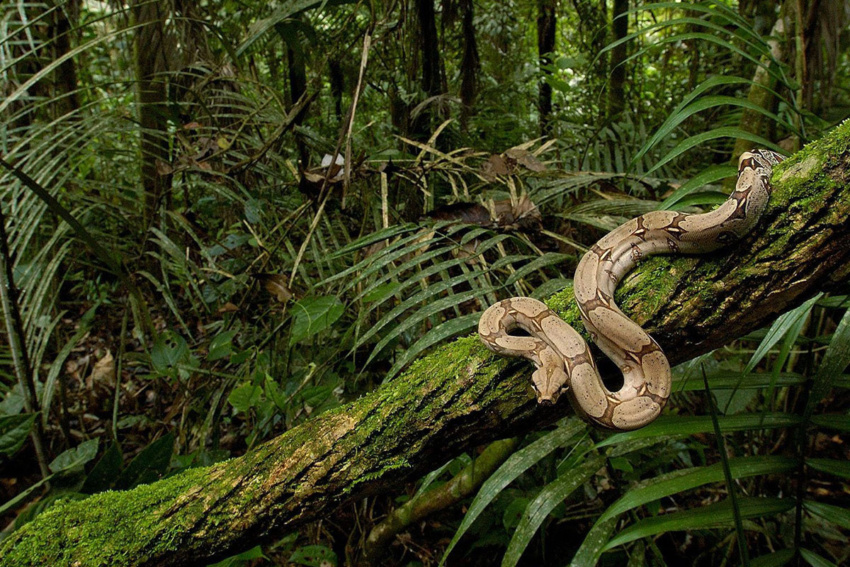
All snakes in the DR pose no danger to humans.
The Dominican Republic is a homeland of more than 20 species of snakes. Surprisingly enough, none of them are venomous or dangerous to humans. You don’t have to be concerned about being bitten by a snake. Besides, all of them are very shy and prefer to escape from humans as fast as possible.
Certainly, if you follow the reptile and be crafty enough to catch it, a snake can defend itself and bite you. But even in this situation you will be safe or saved by a doctor if you are so unlucky to have an allergy reaction.
How big are snakes in the Dominican Republic?
The biggest snake in the Dominican Republic is a giant boa constrictor Hispaniolan Boa (Chilabothrus striatus). Boa constrictors are among the most impressive snakes in the world.
Its body can reach four meters (13 feet) in length and weigh up to 27 kg. Its shiny skin decorated with unique patterns and heavy body fascinates people. Some representatives are very friendly and enjoy being handled. That makes them popular pets.
The smallest serpent in the Dominican Republic is La Hotte Blindsnake. It grows up to 12 inches. This blind snake hides deeply under the ground and goes out only after the rains. That’s why it is often mistaken for a worm. Termites and ants are its main food supply—harmless little snakes.
Green Snakes in the Dominican Republic

Green snakes (La Culebra Verde) prefer to live in cool corners of the forest.
There are three species of Culebra Verde (Green Snake) in the Dominican Republic: Uromacer Catesby, Uromacer oxyrhynchus, and Uromacer frenatus. All of them are nocturnal types and inhabit cool corners of tropical rainforests.
They live on trees, and only Uromacer Catesby can be found in bushes or on the ground. By the way, it has a bad character and can bite you. But its venom is harmless to humans. In most cases, people feel only irritation in the area of the bite.
Slender bodies and naturally decorated skin perfectly mask them among tree branches. Suppose you are curious to see with your own eyes what Culebra Verde looks like. In that case, you should visit the natural monument Salto de la Damajagua and the Botanical Garden of Santo Domingo.
Are there poisonous snakes in Punta Cana?
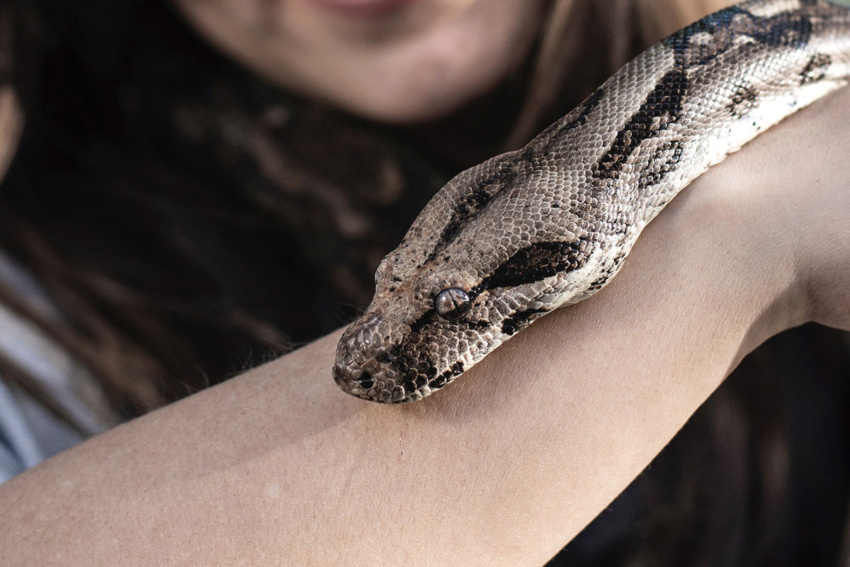
Snakes are not dangerous in Punta Cana.
There are no poisonous snakes in Punta Cana. All resort areas are safe, and you can feel free and comfortable. Besides, snakes are not dangerous for people all over the Dominican Republic. Those little creatures have their own life going on and stay away from noisy and destructive human beings.
What is the best first aid in case of snakebite?
If you get into such an unpleasant situation – do not panic. Dominican snake venom is not lethal to humans, but there is a risk of infection in the wound or allergy reaction. For your peace of mind, let the doctor check you. Before it happens, wash the wound with soap and water and cover it with a dry and clean dressing.
As a conclusion
While the Dominican Republic is generally a safe destination for tourists, you must be aware of the potential wildlife encounters during your stay. The chances of encountering dangerous animals in tourist areas are minimal. Still, in remote or natural areas, you may encounter creatures such as sharks, sea urchins, scorpions, or spiders.
To minimize risks, always follow safety guidelines, use protective gear like water shoes, and stay alert when exploring natural habitats. Most wildlife is not aggressive, and the likelihood of serious harm is low if you take appropriate precautions. By understanding the local fauna and how to react in case of an incident, you can enjoy your vacation in the Dominican Republic with peace of mind, making the most of its stunning beaches, vibrant culture, and rich natural beauty.
Updated on: . Author:

